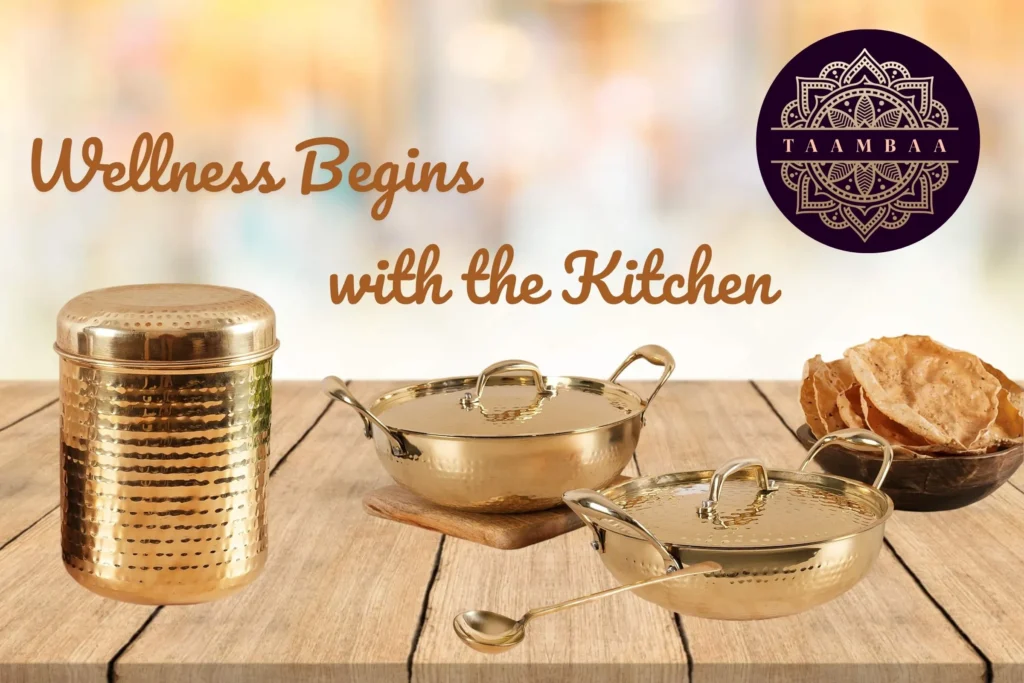
Table of Contents
Cooking with Tradition: The Role of Taamba & Ptal in Indian Kitchens
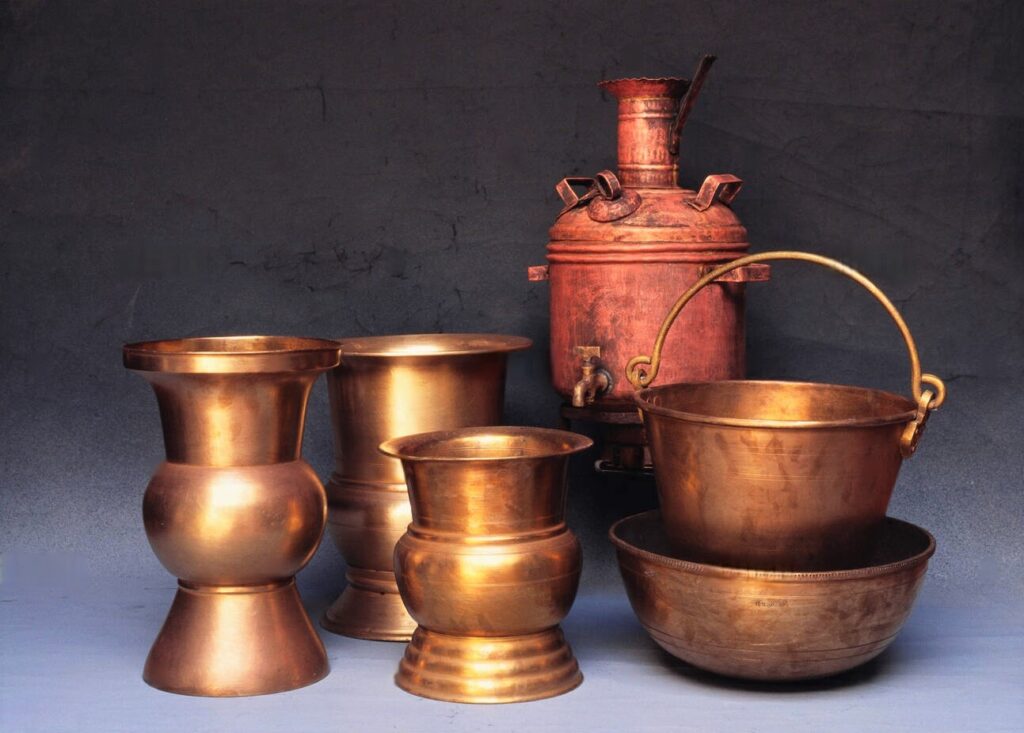
Before the widespread adoption of stainless steel and non-stick cookware, Indian households universally relied on taamba and ptal utensils. The hand-hammered copper lota used for drinking water and thick brass kadais employed for deep frying were cherished for their capacity to enhance flavors while preserving nutrients.
Each metal had a specific purpose in Indian kitchens

- Copper (Taamba): Valued for its antimicrobial abilities, people used it to store and purify water while preparing specific slow-cooked dishes.
- Brass (Ptal): This copper-zinc alloy found extensive use in cooking vegetables dals and desserts because it retained heat effectively while imparting a distinctive flavor.
Fun Fact: Even today, traditional temples and ashrams in India still use brass and copper utensils for preparing prasad and meals, ensuring purity and spiritual significance.
Why Our Ancestors Swore by Taamba & Ptal Utensils
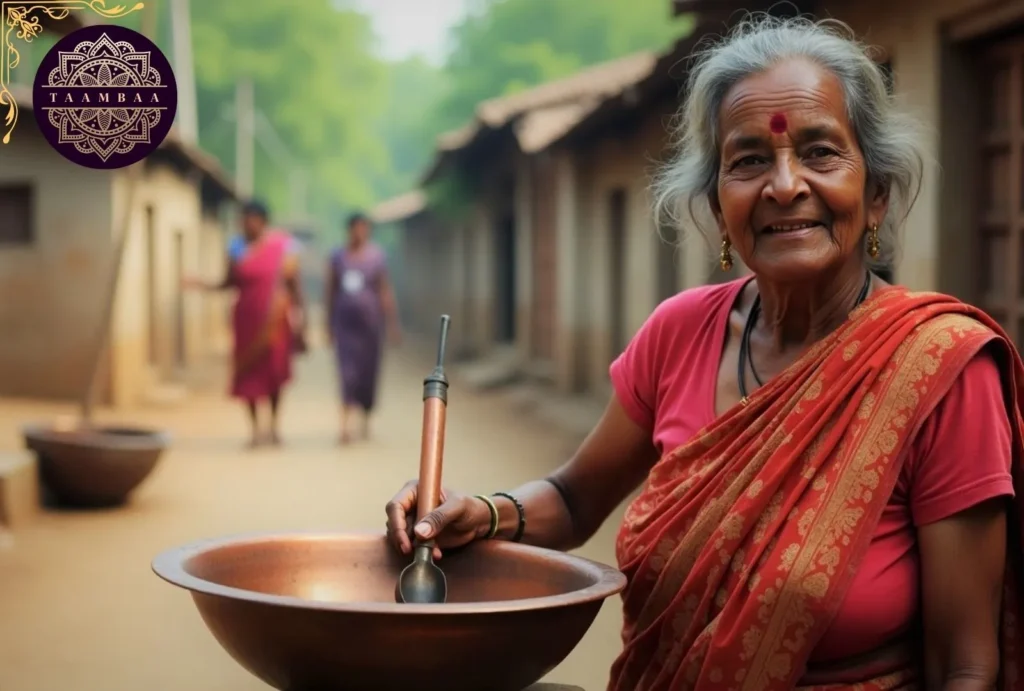
Our grandmothers didn’t just use copper and brass utensils for their aesthetics they chose them for their scientific benefits
- Nutrient Retention – Modern cookware systems tend to deplete food nutrients while copper and brass utensils maintain essential vitamins and minerals.
- Enhanced Digestion-Cooking in brass purportedly stabilizes acidity levels while promoting digestive health which makes it ideal for preparing dishes such as dals, curries, and kheer.
- Kills Harmful Bacteria -Copper’s antibacterial properties work to eliminate harmful bacteria which helps in water purification and the prevention of foodborne illnesses.
- Even Heat Distribution-Brass utensils maintain heat for extended periods which makes them perfect for preparing slow-cooked dishes such as biryanis and stews.
- Eco-Friendly & Sustainable The metals used in this cookware stand as biodegradable entities while maintaining complete recyclability, setting them apart from plastic and non-stick alternatives.
- Did You Know? Traditional Ayurvedic writings state that food prepared in brass utensils achieves superior taste and health benefits than those cooked in contemporary cookware.
The Cultural & Spiritual Significance of Metal Utensils in India
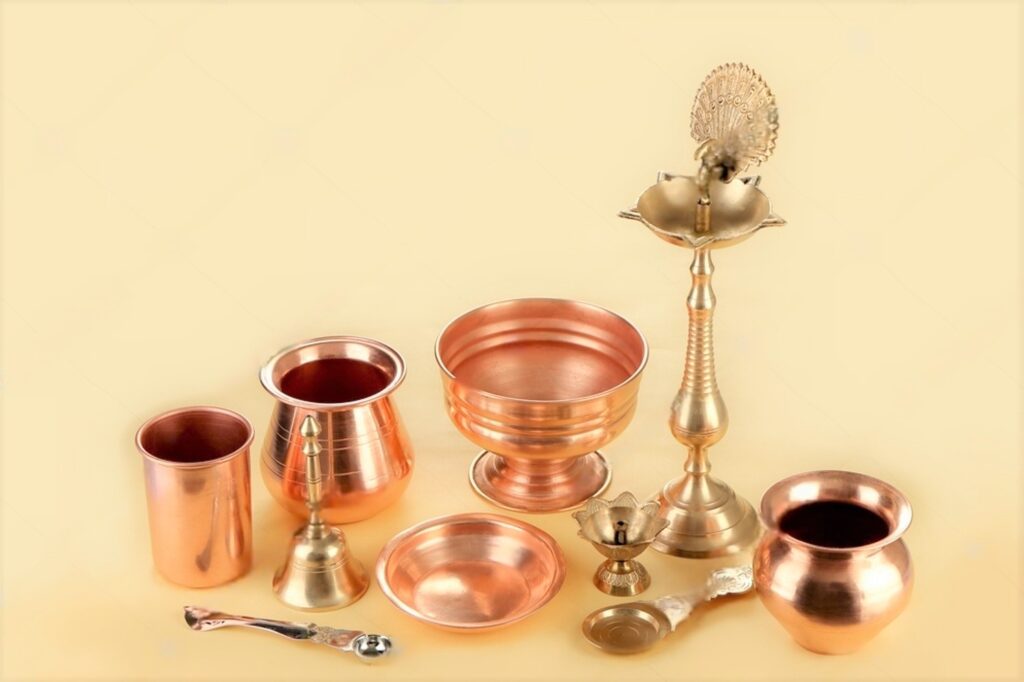
Beyond health, taamba and ptal utensils hold deep cultural and spiritual significance in India
- Temple Offerings & Rituals – A lot of Hindu temples use copper or brass utensils to serve prasad and cook food for gods, as people think of these as pure metals
- Festive Feasts & Traditional Thalis – A good number of homes still serve meals on brass plates during festivals and special events keeping old customs alive.
- Family Treasures Handed Down – Lots of families get old brass and copper kitchenware from their ancestors keeping alive their tales, roots, and customs.
Traditional Indian eateries still cook genuine dishes such as dal baati, makhani gravies, and kheer using the well known Banarasi brass utensils and Rajasthani copper cookware made by hand. These famous cooking vessels continue to play a crucial role in preparing authentic Indian cuisine.
The Decline & Revival of Copper & Brass Utensils
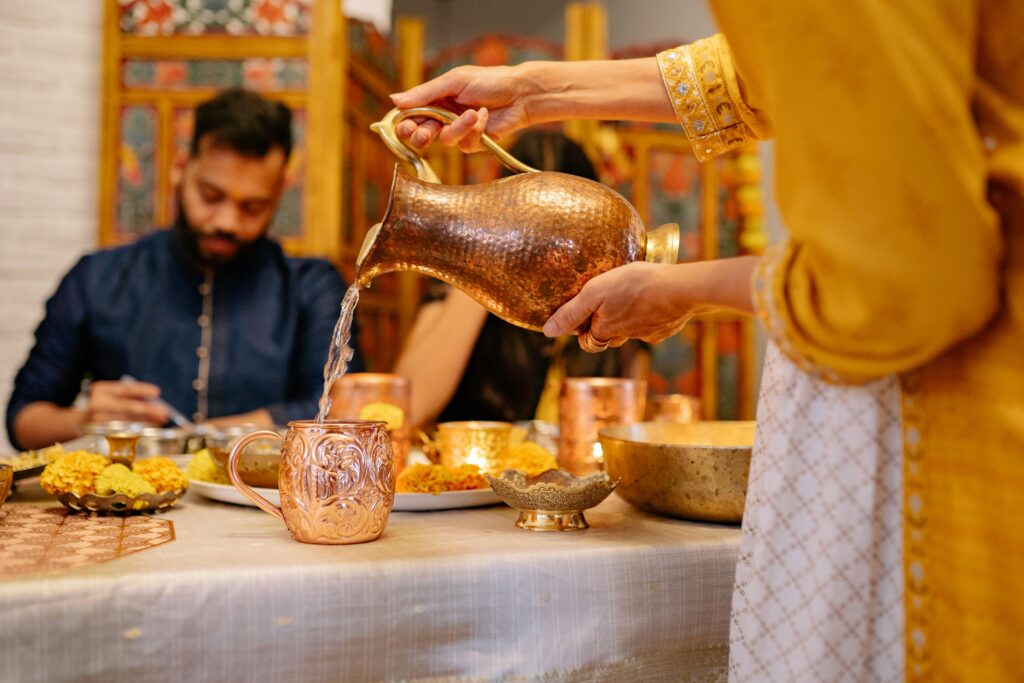
The availability of stainless steel, aluminum and non-stick cooking utensils caused taamba and ptal utensils to decrease in popularity. Current research together with the rebound of Ayurvedic practices has restored the interest in these cookware items.
The use of traditional cookware for better health now receives support from chefs as well as nutritionists and Ayurveda practitioners. Brass and copper utensils have become standard equipment in high-end restaurant kitchens which specialize in authentic Indian cuisine for boosting flavor and authenticity in dishes.
Final Thoughts: A Legacy Worth Preserving

The use of taamba and ptal utensils represents a timeless tradition which connects us with both favorable cuisine and consciousness of our body health and environment. These historical cooking utensils let us celebrate our family heritage through Ayurveda while constructing a sustainable life. The time has come to bring back Indian cooking magic using both taamba & ptal kitchen utensils. Introduce your cookery with a basic brass kadhai or copper lota to experience immediate changes in health benefits and cooking quality.
